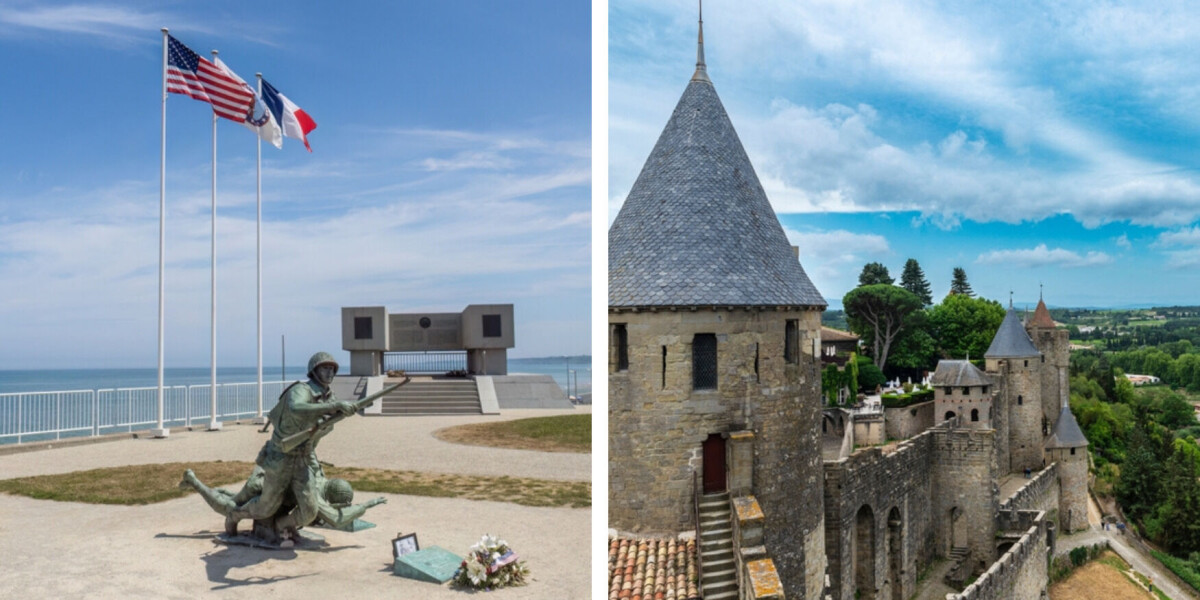
- Select a language for the TTS:
- UK English Female
- UK English Male
- US English Female
- US English Male
- Australian Female
- Australian Male
- Language selected: (auto detect) - EN
Play all audios:
THE ICONIC SITES ARE SET TO BE CONSIDERED IN JULY NEXT YEAR The beaches of D-Day in Normandy and the medieval fortresses of Carcassonne in Occitanie have been submitted for consideration on
the UNESCO World Heritage List. Both applications are set to be examined by UNESCO in July 2026, the Ministry of Culture announced on February 10. In a press release, the ministry said:
“These applications were drawn up in close collaboration with the department of Aude, the city of Carcassonne, local authorities, and with the Normandy region.” NORMANDY BEACHES The Normandy
beaches have been submitted for consideration, including a “vast land and maritime area covering the five sectors of the Normandy Landings defined by the Allies in 1944: Utah Beach, Omaha
Beach, Juno Beach, Gold Beach and Sword Beach”, said la Direction régionale des affaires culturelles (regional directorate for cultural affairs, DRAC) of Normandy, as reported by BFMTV. The
D-Day beaches were highly significant because they were “the theatre of Operation Neptune, launched on June 6 1944 on the Normandy coast [which] led to the liberation of Western Europe and
the end of the Second World War in Europe”, said the Ministry of Culture press release. The area also includes wartime bunkers, and wrecks of French, English and German warships. Read also:
How a Frenchman became a GI on Omaha beach in WW2 The beaches have become “a place of gathering around a universal message” and bear “the memory of a struggle for freedom and peace”, the
ministry said. An application for the area was first submitted in 2018, but UNESCO later said that at the time that it was postponing all “evaluation of sites associated with recent
conflicts”. Read more: The application is now up for consideration again. “We all hope that this application will be successful; it is the logical next step in the process of remembrance
and commemoration,” said Michael Dodds, director of the Comité régional du tourisme de Normandie (Normandy tourism committee). CARCASSONNE AND SURROUNDING CASTLES The second application is
for “the system of fortresses of Carcassonne”, in Aude (Occitanie). These 13th- and 14th-century structures are made up of eight monuments spread across the departments of Aude and Ariège.
They include “the fortifications of Carcassonne and, surrounding them, the castles of Lastours, Termes, Aguilar, Peyrepertuse, Quéribus, Puilaurens and Montségur”, said the Culture Ministry.
It continued: “Built on rocky outcrops in magnificent landscapes [these buildings] illustrate a pivotal period of history and provide a unique example of military architecture, giving them
outstanding universal value”. Read more: Photos: These are France’s top five most visited national monuments in 2024 Read also: Full tour of Carcassone’s medieval ramparts to open for the
first time Carcassonne was the fifth-most-visited national monument in France in 2024, with 643,882 visitors, said the Centre des Monuments Nationaux (CMN) in January.





